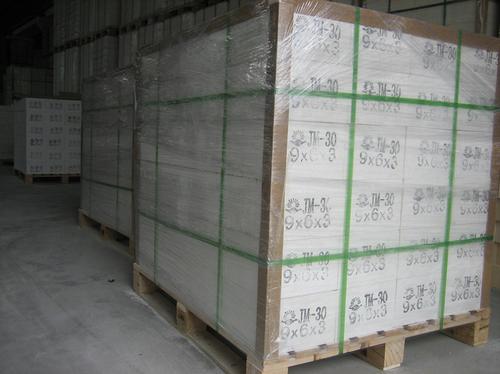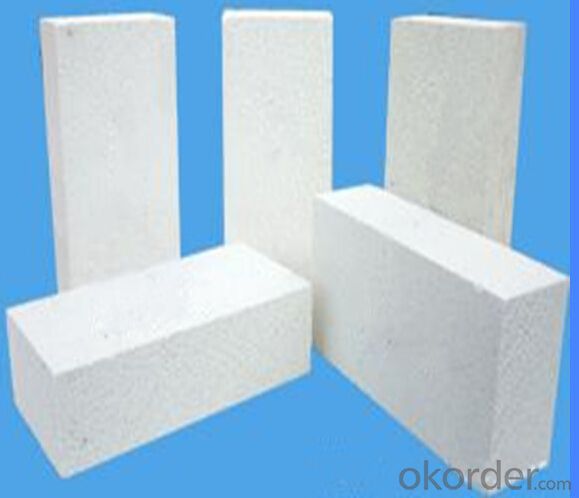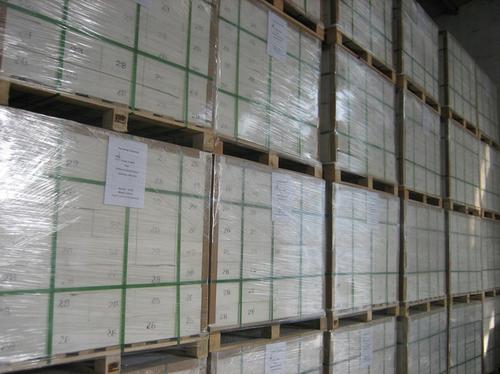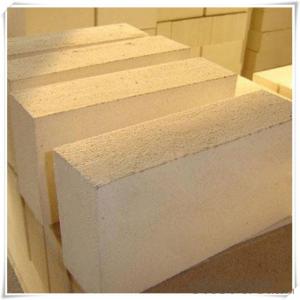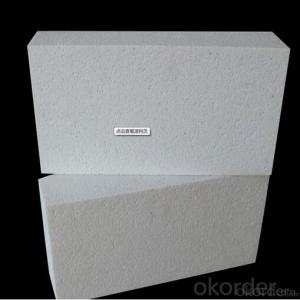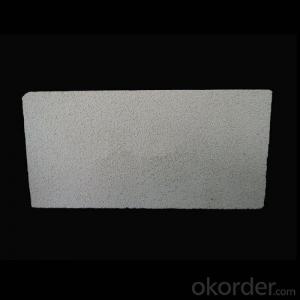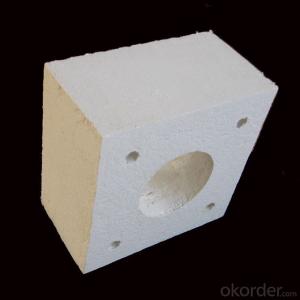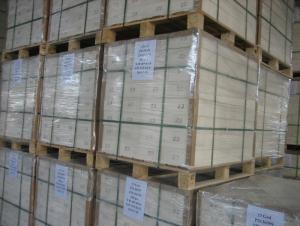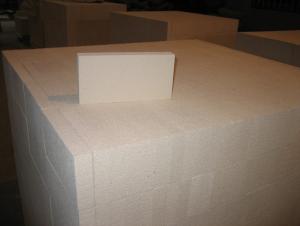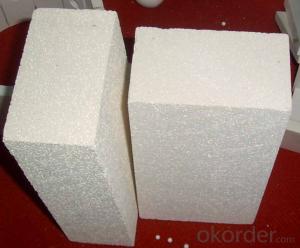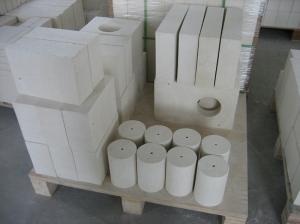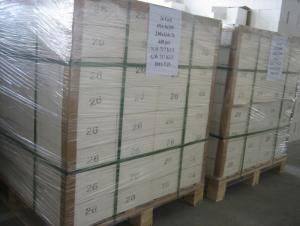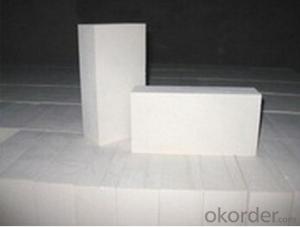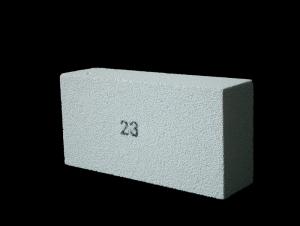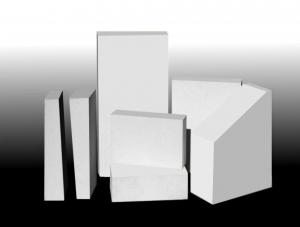Insulating Fire Brick - Refractory Mullite Insulating Refractory Brick JM 39
- Loading Port:
- Shanghai
- Payment Terms:
- TT OR LC
- Min Order Qty:
- 20 m.t.
- Supply Capability:
- 20 m.t./month
OKorder Service Pledge
OKorder Financial Service
You Might Also Like
Okorder series heat insulation brick
Okorder series thermal insulation brick is an effective, energy saving, low carbon, environmental protection advanced, according to the ASTM standard manufacturing products. Okorder series products have all kinds of materials in the field of metallurgy, industrial furnaces, aluminum, the best Li Ning petrochemical and insulation, electric power and glass ceramics. They can be used as part of an insulation or not to melt. Products have been widely used in the following furnace, achieved satisfactory results.
Application of heat preservation brick
Metallurgical Industry: blast furnace, hot blast furnace, heating furnace, etc..
Petrochemical Industry: ethylene cracking furnace, hydrogen furnace, the main furnace, heating furnace, etc..
Ceramic industry: roller kiln, kiln, etc..
Glass industry: glass furnace regenerator, etc.
Carbon industry: carbon furnace, etc..
Aluminum electrolysis industry: aluminum reduction cell, etc.
Other industries: tunnel kiln, shuttle kiln, etc..
Advantages of heat insulation brick
Low thermal conductivity: many air holes will bring good thermal insulation effect, energy saving.
High crushing strength: high crushing strength, volume stability.
Low heat storage: small heat storage, absorb more heat, energy-saving effect is obvious.
Chundu: High-speed Rail, low content of alkali metal impurities.
Accuracy: the size of the brick machining precision, cutting and grinding the special shape, speed up the brick.
Insulating brick
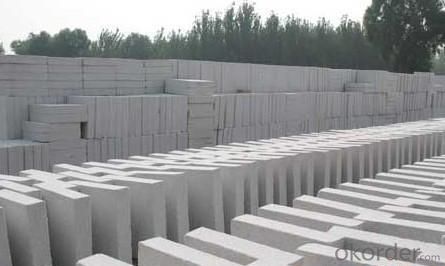
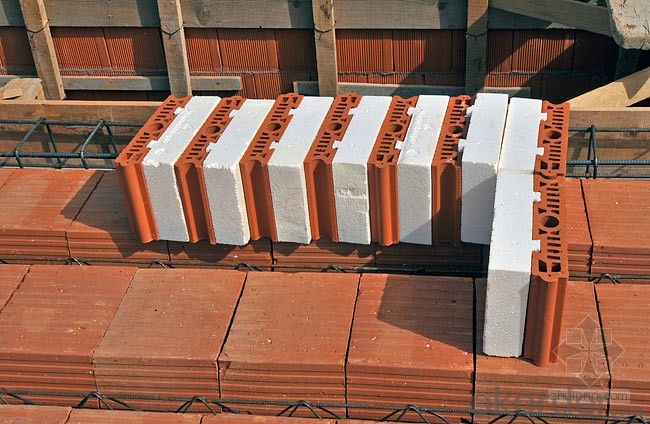
- Q: Are insulating fire bricks resistant to insect infestation?
- Insulating fire bricks are not specifically designed to be resistant to insect infestation. These bricks are primarily used for their thermal insulation properties in high-temperature applications such as kilns, furnaces, and fireplaces. While they are not typically prone to insect damage, they are not completely immune to it either. Insects may still be able to penetrate the bricks if they find small cracks or openings in the material. However, insulating fire bricks are generally dense and compact, making it difficult for insects to burrow or nest within them. It is always recommended to take preventive measures to control and eliminate potential insect infestations in any construction material, including insulating fire bricks, to ensure their longevity and functionality.
- Q: Are insulating fire bricks resistant to high-velocity gas flow erosion?
- Yes, insulating fire bricks are generally resistant to high-velocity gas flow erosion. These bricks are designed to withstand high temperatures and are made from materials that can withstand the erosive effects of gases flowing at high velocities. However, the resistance may vary depending on the specific composition and quality of the fire bricks.
- Q: Do insulating fire bricks have a low thermal expansion rate?
- Yes, insulating fire bricks generally have a low thermal expansion rate. These bricks are designed to withstand high temperatures and thermal shocks, and one of their key properties is their ability to maintain their shape and dimensions under extreme heat conditions. Insulating fire bricks are made from materials that have a low coefficient of thermal expansion, meaning they expand and contract minimally when exposed to changes in temperature. This low thermal expansion rate ensures that the bricks remain stable and do not crack or break due to thermal stress. Additionally, the low thermal expansion rate of insulating fire bricks allows for better insulation performance, as it minimizes the gaps that can form between the bricks when they expand and contract, reducing heat loss and increasing energy efficiency.
- Q: Can insulating fire bricks be used for both residential and commercial purposes?
- Yes, insulating fire bricks can be used for both residential and commercial purposes. Insulating fire bricks are designed to provide excellent insulation and thermal protection, making them suitable for a wide range of applications. In residential settings, these bricks can be used for insulating fireplaces, wood-burning stoves, and pizza ovens, among others. In commercial settings, they are commonly used for kilns, furnaces, boilers, and industrial ovens. The versatility of insulating fire bricks makes them a popular choice for both residential and commercial projects where effective thermal insulation is required.
- Q: Can insulating fire bricks be used in the construction of regenerators?
- Yes, insulating fire bricks can be used in the construction of regenerators. Regenerators are devices commonly used in industrial processes, such as glass manufacturing and metallurgy, to recover and reuse waste heat. Insulating fire bricks are designed to have low thermal conductivity, making them an excellent choice for insulating applications. By using insulating fire bricks in the construction of regenerators, heat loss can be minimized, leading to more efficient heat recovery and energy savings. Additionally, these bricks can withstand high temperatures, making them suitable for the harsh operating conditions typically found in regenerators. Overall, insulating fire bricks are a reliable and effective choice for the construction of regenerators.
- Q: Do insulating fire bricks have a high thermal shock resistance?
- Yes, insulating fire bricks typically have a high thermal shock resistance. These bricks are specifically designed to withstand rapid changes in temperature without cracking or breaking. They are made from lightweight refractory materials that have low thermal conductivity, which helps to minimize heat transfer and prevent thermal stress. Additionally, insulating fire bricks often go through a firing process that further enhances their thermal shock resistance. Overall, these bricks are well-suited for applications where they are exposed to extreme temperature fluctuations, making them a reliable choice for insulation in high-temperature environments.
- Q: Can insulating fire bricks be used in pizza ovens or outdoor grills?
- Yes, insulating fire bricks can be used in pizza ovens or outdoor grills. These bricks are designed to withstand high temperatures and provide excellent insulation, making them ideal for retaining heat and creating consistent cooking conditions in pizza ovens and grills.
- Q: What bricks are thermal insulation bricks?
- Insulating bricks, a new type of product that can replace tiles, are mainly used in toilets, kitchens, TV sets, bedrooms, walls and so on. And brightly colored, various specifications, can be cut at random, the section neatly.
- Q: Can insulating fire bricks be used in fertilizer plants?
- Insulating fire bricks have the capability to be utilized in fertilizer plants, as they possess exceptional thermal insulation properties, high resistance to heat, and low thermal conductivity. These characteristics render them appropriate for various industrial applications, including those found in fertilizer plants. Within fertilizer plants, there are often procedures that involve elevated temperatures, such as the creation of ammonia or the transformation of raw materials into fertilizers. In these processes, insulating fire bricks can be employed to line the walls, floors, and roofs of the furnaces, kilns, and reactors. The thermal insulation provided by insulating fire bricks assists in minimizing heat loss, improving energy efficiency, and maintaining a steady temperature inside the processing units. This is of utmost importance for controlling chemical reactions and ensuring the plant's optimal performance. Furthermore, insulating fire bricks possess a high resistance to chemical attack, which is crucial in fertilizer plants where corrosive substances are frequently handled. They can endure the harsh chemicals and gases present in the production environment without deteriorating or compromising their insulating capabilities. Moreover, insulating fire bricks are lightweight, making them easier to handle and install in various areas of the plant. This can result in cost savings during construction or maintenance activities. In conclusion, insulating fire bricks are a suitable choice for fertilizer plants due to their thermal insulation properties, high resistance to heat, chemical resistance, and lightweight nature. They can contribute to the efficient and safe operation of the plant while providing long-lasting performance in the demanding conditions of the fertilizer industry.
- Q: What is the typical thermal diffusivity of an insulating fire brick?
- The thermal diffusivity of an insulating fire brick can vary depending on its composition and manufacturing process. However, typically, insulating fire bricks have thermal diffusivity values ranging from approximately 0.05 to 0.2 mm²/s. Thermal diffusivity measures the speed at which heat can pass through a material. A low thermal diffusivity suggests that the material is a good insulator, as it does not conduct heat quickly. Insulating fire bricks are designed to have low thermal diffusivity to minimize heat transfer and provide effective insulation in high-temperature applications, like furnaces, kilns, and fireplaces. It is important to note that the specific thermal diffusivity of an insulating fire brick can be influenced by various factors, including the type of raw materials used, the manufacturing process (such as firing temperature and duration), and any additives or coatings applied to enhance insulation properties. Therefore, consulting the manufacturer's specifications or conducting specific tests is crucial to determine the thermal diffusivity of a particular insulating fire brick.
Send your message to us
Insulating Fire Brick - Refractory Mullite Insulating Refractory Brick JM 39
- Loading Port:
- Shanghai
- Payment Terms:
- TT OR LC
- Min Order Qty:
- 20 m.t.
- Supply Capability:
- 20 m.t./month
OKorder Service Pledge
OKorder Financial Service
Similar products
Hot products
Hot Searches
Related keywords



